7 perennial flowers to plant now for a vibrant summer garden
It’s not too late to grow these species.
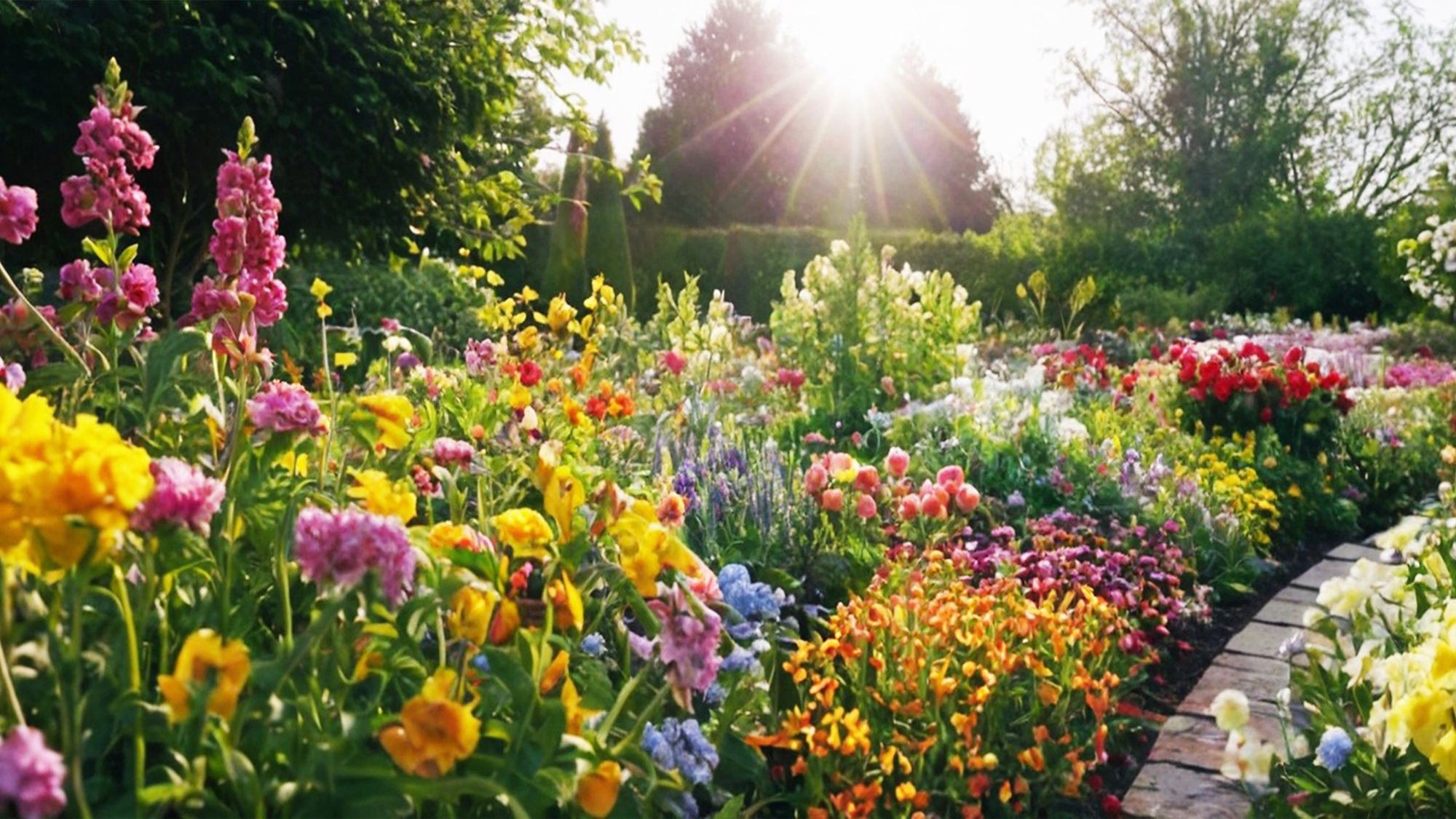
The arrival of June means that spring has well and truly sprung, bringing with it a flurry of pretty flowers and vivid greenery.
Most gardens will have exploded into life by now, but that doesn’t need to put a stop to new planting. In fact, taking the time to plant some additional species in June can help to extend your flowering season well into the late summer and early autumn. And if you choose to plant perennials, then you’ll be able to benefit from this longer blooming window year after year.
If growing from seed, you’ll want to choose plants that have a quicker maturing timeline, so that you can enjoy their flowers earlier and therefore for longer.
This is because even if the species has long-lasting blooms, an early autumn frost could quickly put an end to your enjoyment if it flowers too late; you want to be a few weeks ahead of that window.
Another option is to buy varieties that have already been grown and established by a garden center or nursery, so that you can quickly transplant them directly into your garden for immediate enjoyment.
The following seven varieties will all reach full bloom in the summer and provide a colorful addition to any garden.
1. Butterfly weed
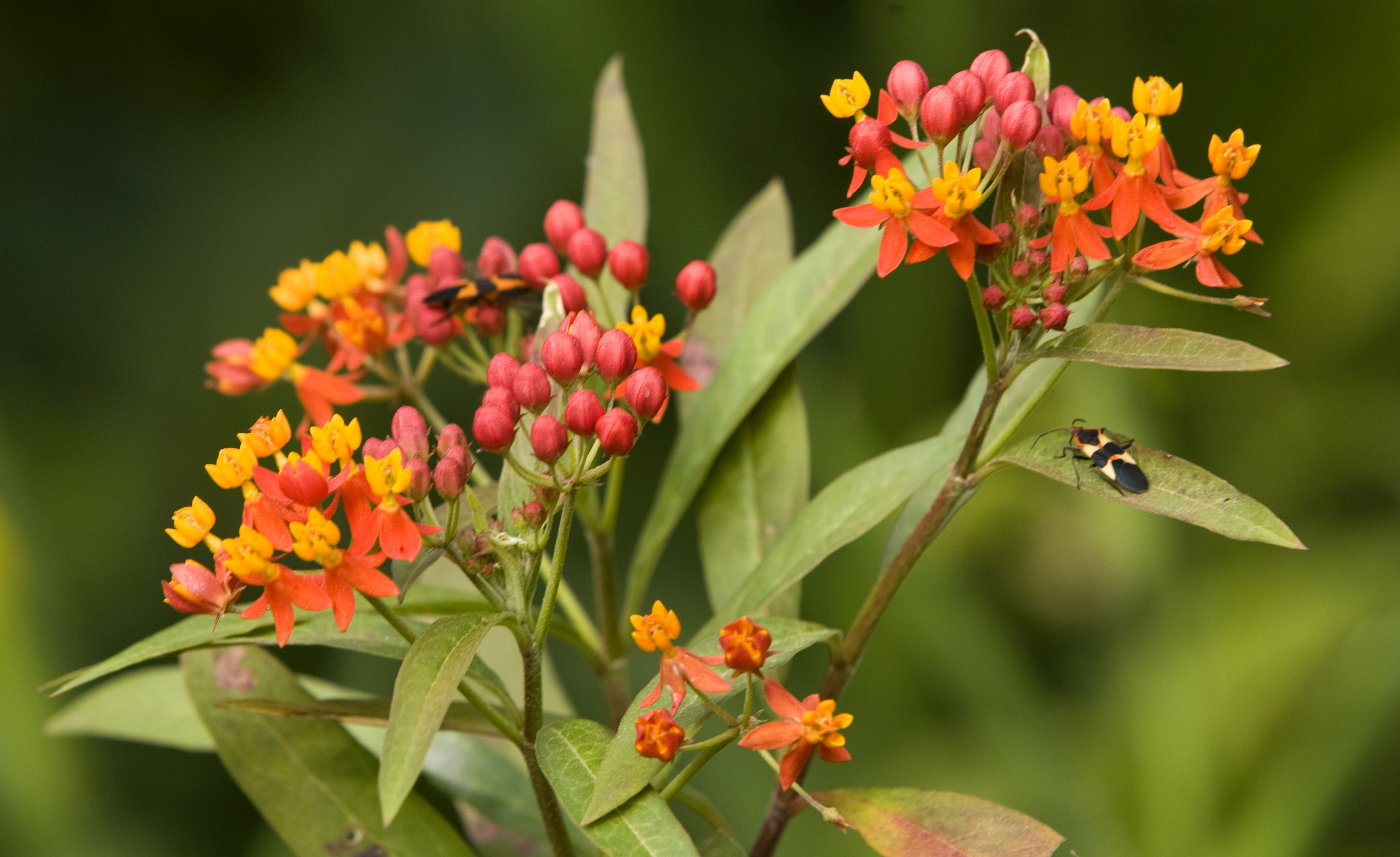
Also known as milkweed, butterfly weed has elegantly thin green leaves and bountiful clusters of flowers in vibrant orange.
Get instant access to breaking news, the hottest reviews, great deals and helpful tips.
You can also find varieties in pink, purple and red, if that’s more suited to your color scheme. In terms of size, the plant can range from 1 to 5 feet, so pick the variety that best suits your needs and planting location. Butterfly weed, as the name suggests, is very popular with butterflies, making it a great addition to pollinator gardens.
If you are rewilding your garden and looking to attract more wildflower species, then this is also a great choice; lots of the milkweed family is native to the US.
This has the added benefit of ensuring that butterfly weed is quite low maintenance, as long as you choose a variety that is indigenous to your area. It is drought-tolerant, enjoys full sun and can thrive in poor soils, so it should be a reliable source of blooms year after year.
At the end of the flowering season, the flower’s seed pods will split open and drop seeds onto the soil, ensuring a fresh crop of plants next year. If you want to control this spread, deadhead the flowers before they reach this stage.
These garden gloves are made of nylon and nitrile and come in three sizes — small, medium and large. They offer excellent non-slip properties, are comfortable around the wrist, breathable and machine washable. At Tom's Guide, we recommend them as the best overall gardening glove.
2. Globe thistle
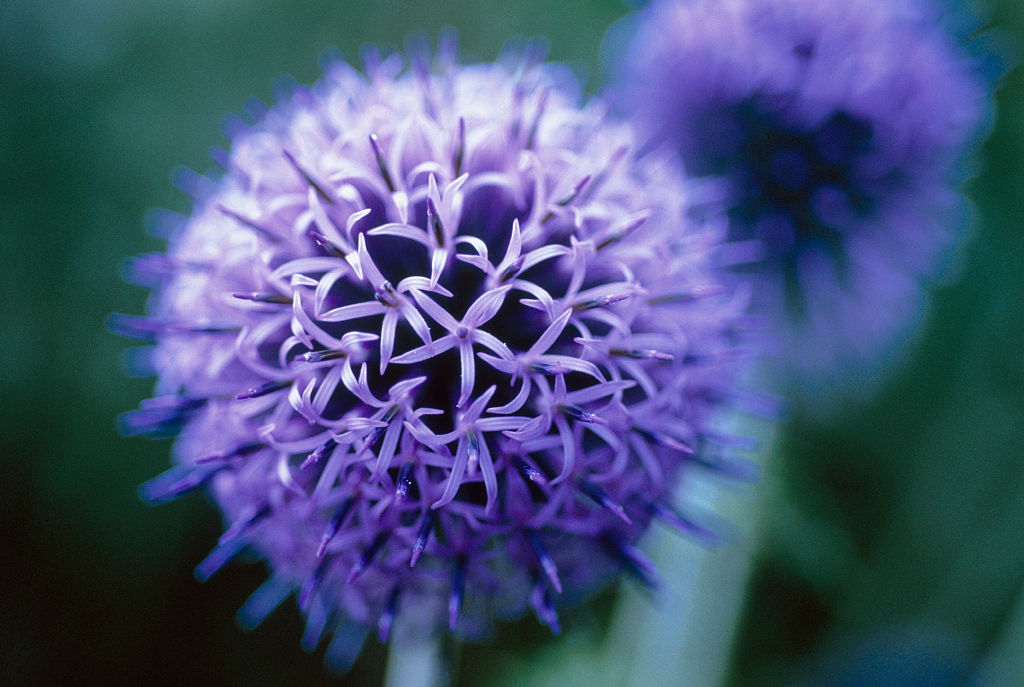
For a striking pop of color, look to the globe thistle. As the name suggests, this plant features a spherical blue bloom made up of tiny flowers that extend outwards from the center, creating a globe effect.
It sits atop a slender, silvery green stem with long spiky leaves, which adds character and texture to any garden. In a breeze, globe thistles will also bob about in a whimsical manner, making them a great choice to line paths or form borders around other plants.
The spikiness of their leaves can function as useful deterrents to local wildlife like deer and rabbits, while the blooms still attract pollinators – you get the best of both worlds.
Since globe thistle is a fast growing plant, reaching maturity in 6-8 weeks, you can plant it from seed in early June and still enjoy the flowers this same summer. The species is drought-tolerant and prefers full sun, making it a practical choice for warm-weather gardening year after year.
Just make sure that you provide ample watering during its early growth period, as it will need this extra hydration to develop healthy roots. Once established, it should flower healthily year after year.
3. Coneflower

A beloved flower of many gardeners, the coneflower — or echinacea — has a large center of seeds that is surrounded by long, vibrant petals that bend slightly backwards to create a cone-like shape.
Badminton lovers may see the resemblance to a shuttlecock, but this plant is also often likened to an oversized daisy. Coneflower comes in many different colors, including vivid pinks and purples, and their large centers are ideal for self-seeding; as with the butterfly weed, deadhead the blooms at the end of the season if you don’t want the plant to spread next year.
You can also deadhead throughout the summer to encourage more waves of blooms, as coneflower is known to flower into August and last through early fall.
As with many other options on this list, coneflowers are low maintenance and have developed to thrive in warm summer conditions. They are both heat and drought tolerant, germinate in just 2-3 weeks, and are native to the U.S., so you can even add them to a wildflower garden.
For best results, plant your coneflower in sunny conditions and well-draining soil. At the end of the season, consider leaving the remaining seedheads as a snack for local wildlife!
4. Hardy geranium
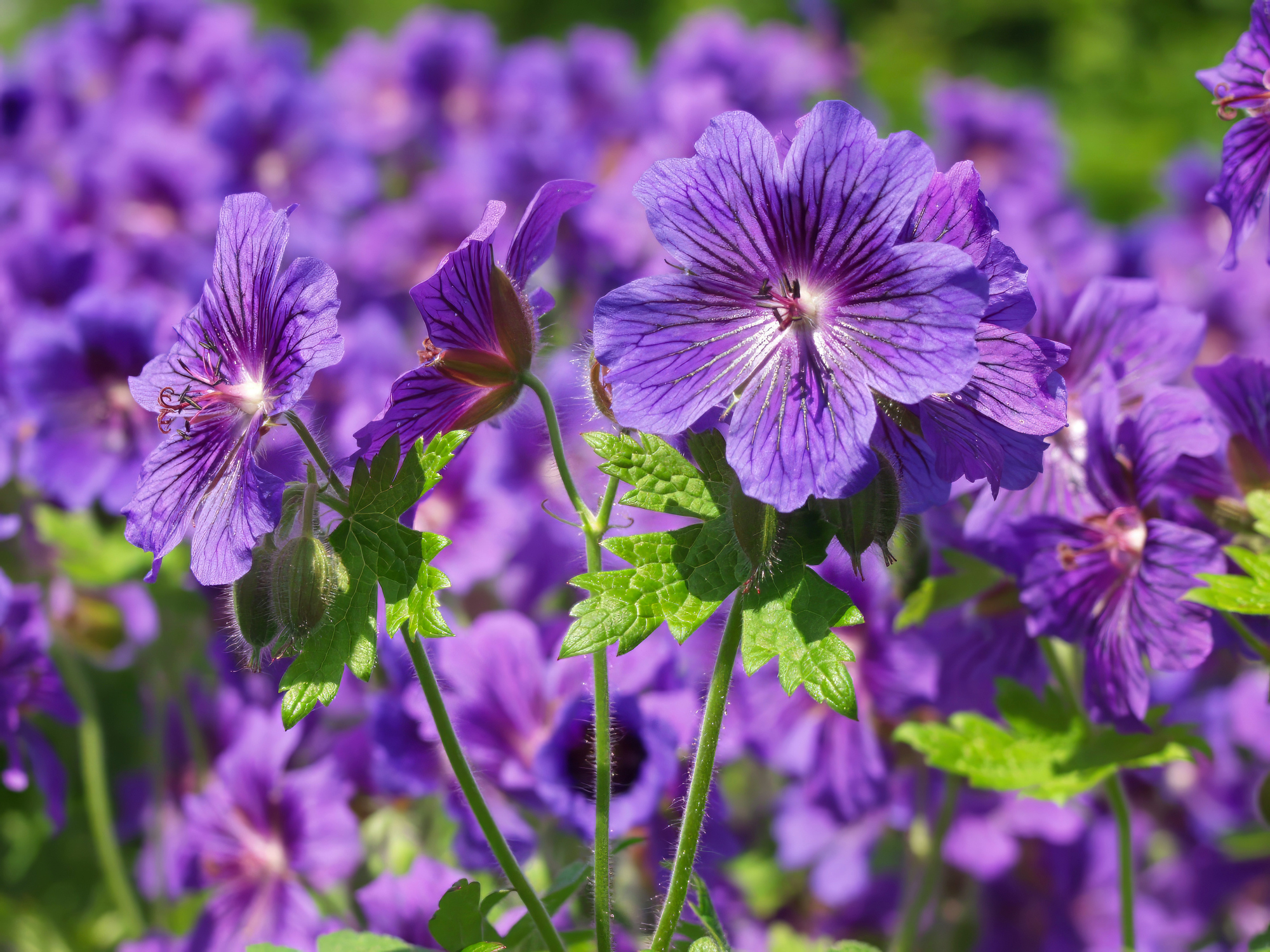
Hardy geraniums are a great choice for June planting as their long flowering season means you can still get a lot of enjoyment, even if you add them to the garden later in the month.
They get their name from being low maintenance and reliable, producing large-petalled blooms in a rainbow of colors each year. Depending on your garden’s light, you can select varieties that prefer full sun or partial shade, as well as choose from varying heights; some species are short enough to even be used as a ground cover.
To extend the flowering season, consider cutting back some of the plant in midsummer to encourage more growth and flowering throughout the latter part of the summer.
You will need to do this again at the end of the season, but this will ensure it springs back into life again next year. If planting in June, it’s recommended to pick up an already established plant and transfer it into your garden, watering it more than usual to help it get established.
5. Coreopsis
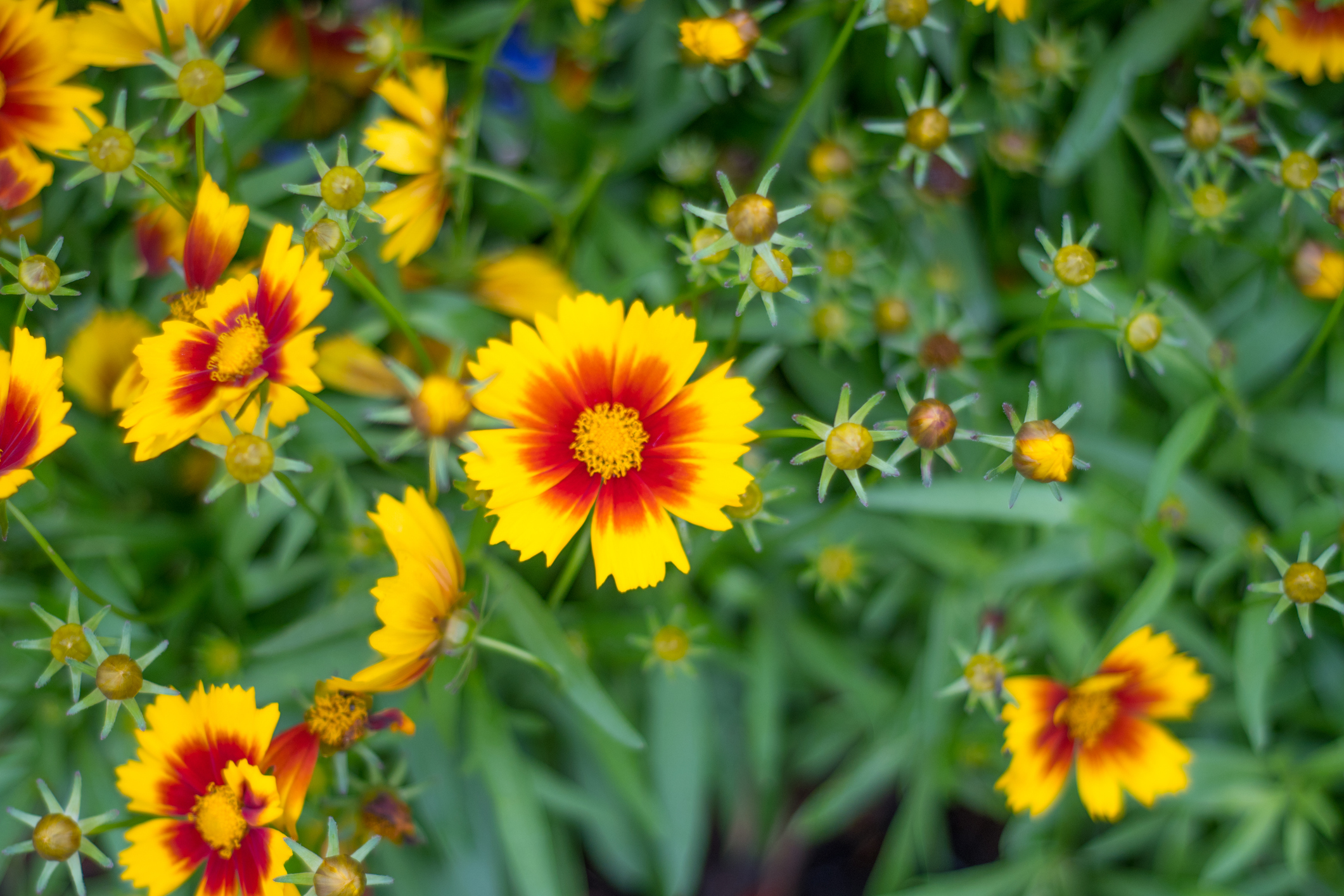
Coreopsis, also known as basket of gold, produces swathes of saturated yellow flowers that sometimes feature a contrasting red ring around their seedhead.
Some varieties feature red or two-toned blooms, so have a look for the ones that will suit your garden best. Although the flowers themselves are fairly small, they crown very skinny stalks and can create a sea of blooms when planted en masse. Their maximum height is approximately four feet, making them an option for meadow planting or simply for border planting.
Coreopsis has a very long flowering season that extends up until the first frost and can reach maturity in just 60 days, so they are a contender for seed planting if you get started now.
Longer blooming seasons tend to involve deadheading for best effect and coreopsis is no exception. Otherwise, they are pretty low maintenance and hardy, since they can handle both full sun and partial shade. After their initial adjustment to your garden’s soil, they should also be drought-tolerant.
6. Pincushion flower
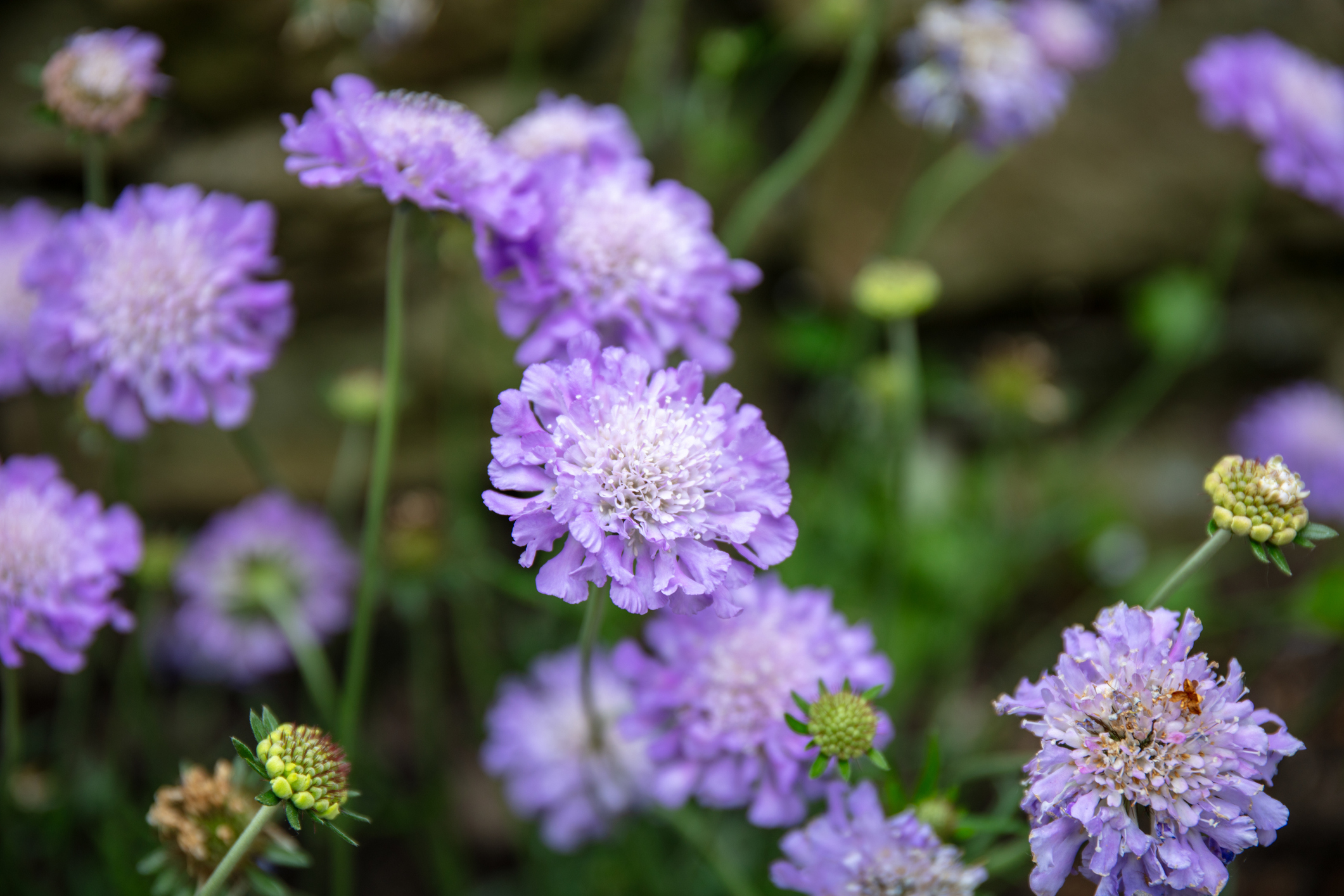
While its formal name is scabious, its colloquial name of pincushion flower is far more evocative of this sweet plant’s shape. When it blooms, pincushion stems are topped with rounded blooms, some with an extra fringe of small petals, from which a halo of tiny petals and stamens protrude.
Some species look similar to a sea anemone, while others are more plush with petals, but all have a pretty rounded shape and added dimension. You can also find pincushion flowers in a range of different colors, from soft pastels to striking reds and purples. They only reach 2-3 feet in height, but each bloom will sway elegantly on its stem in the breeze.
Pincushion flowers are a useful way to add soft structure to a border, especially as they should flower all summer long. As always, some deadheading mid-season can help to prolong their flowering people. Since they require about three months to grow from seed, you’re better off buying some established plants and transplanting them in June in order to enjoy them this year. They shouldn’t need too much water as they are drought-tolerant, but do plant them in full sun.
7. Anise hyssop

For a fragrant and slightly different flowering perennial, why not add anise hyssop to your garden? Its blooms form long spikes of tiny purple flowers, bringing an elongated splash of color each summer.
Anise hyssop is a member of the mint family and while not as potent as its kin, direct sunlight can help release the species’ signature herbal scent. The foliage of the plant is bright green and fairly large, helping it to grow into a shrub-like shape that has a soft yet substantial presence. Pollinators love anise hyssop flowers, so you’ll also be bringing a range of bees, butterflies and insects to the garden.
To enjoy anise hyssop this summer, you’ll need to buy a mature plant as the species will take two years to flower if planted from seed.
Once transplanted into a spot with full sun or partial shade, make sure you water it sufficiently to help it get established. After that, this plant requires little hands-on attention and minimal watering. Deadhead the older blooms to extend the flowering season but otherwise just sit back and enjoy.
More from Tom's Guide
- 9 perennial flowers to plant in April for blooms year after year
- Why you should be leaving grass clippings on your lawn after mowing
- 3 lawn care mistakes silently killing your grass this summer

Despite making her home in urban metropolises, Madeleine Streets has been nurturing a green thumb for decades.
Raised by a garden designer, she is putting that childhood education to use by helping others learn how to make their garden bloom, while filling her own New York home with cat-friendly plants.
When not writing about gardening and the outdoors, Madeleine loves to cook, study wine and borrow books from her local library.
You must confirm your public display name before commenting
Please logout and then login again, you will then be prompted to enter your display name.

